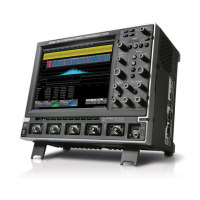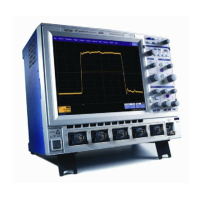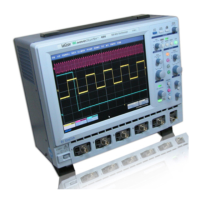X-Stream Operator’s Manual
WM-OM-E Rev I 159
While such a value range can be infinite, for practical purposes it need only be defined as large
enough to include any realistically possible parameter value. For example, in measuring TTL
high-voltage values a range of +/-50 V is unnecessarily large, whereas one of 4 V +/-2.5 V is more
reasonable. It is the 5 V range that is then subdivided into bins. And if the number of bins used were
50, each would have a range of 5 V/50 bins or 0.1 V/bin. Events falling into the first bin would then
be between 1.5 V and 1.6 V. While the next bin would capture all events between 1.6 V and 1.7 V,
and so on.
After a process of several thousand events, the bar graph of the count for each bin (its histogram)
provides a good understanding of the distribution of values. Histograms generally use the 'x' axis to
show a bin's sub-range value, and the 'Y' axis for the count of parameter values within each bin.
The leftmost bin with a non-zero count shows the lowest parameter value measurements. The
vertically highest bin shows the greatest number of events falling within its sub-range.
The number of events in a bin, peak or a histogram is referred to as its population. The following
figure shows a histogram's highest population bin as the one with a sub-range of 4.3 to 4.4 V (which
is to be expected of a TTL signal).
The lowest-value bin with events is that with a sub-range of 3.0 to 3.1 V. As TTL high voltages need
to be greater than 2.5 V, the lowest bin is within the allowable tolerance. However, because of its
proximity to this tolerance and the degree of the bin's separation from all other values, additional
investigation may be required.
Scope Process
The instrument generates histograms of the parameter values of input waveforms. But first, you
must define the following:
• The parameter to be histogrammed
